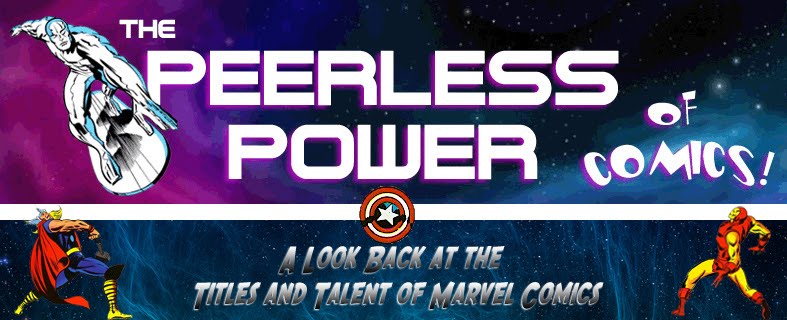Now what does this 1963 cover from artist Vic Prezio remind you of?
Reportedly, it provided the inspiration for a cover from Fantastic Four published three years later and rendered by artist Jack Kirby. The renditions of both artists were a bit before my time as a regular FF reader; having been a fairly new reader of the book in the early 1970s with only a little over twenty issues under my belt, I was still catching up on prior stories courtesy of Marvel's Greatest Comics, the successor to Marvel Collectors' Item Classics which had begun reprinting Silver Age FF stories in 1965 as part of its "grab bag" format but shifted in late 1969 to MGC which focused exclusively on FF reprints. Consequently, it wasn't until six years after the fact when I first read the story of Galactus, whose battle with the FF, for me, took place in MGC and was heralded in this case by artist Sal Buscema.

Obviously Mr. Buscema has a different take than Kirby on this story's cover presentation, preferring to show the FF in battle with Galactus rather than fleeing for their lives--but there are other interesting distinctions that bear mentioning. "If This Be Doomsday!", the title from which the original's caption takes its wording, is perhaps more at home above an image that has the FF appearing helpless against the threat, since the word "doomsday" implies a final hour that no one can avert or escape--whereas on the MGC cover, doomsday seems less likely with Galactus, in full view, being less of a lofty figure from on high and laser-focused on dealing with the FF. Kirby's image is also helped by a more apocalyptic background rather than a more serene setting of a clear day that suggests this battle is an isolated one and not a danger to the city, or the world.)
In addition, Buscema's cover is forcing us to assume that the Torch has lapsed on the ledge of a building other than the FF's headquarters, since Galactus's conversion device was constructed on the Baxter Building. We're also left to assume that the Invisible Girl, whom Buscema doesn't appear to have room for, is either looking distraught from below, or is rushing from off-panel to help the Torch--that is, after she's:
-
Taken the FF's elevator to the lobby;
- Hurried across the street while dodging traffic (where none of the drivers seem to know an FF uniform from a bike messenger);
- Darted inside the other building, nearly tripping over a manhole cover;
- Frantically pushed the elevator's Up button until one finally arrives;
- Gritted her teeth at all the stops the car must make for the other people riding up with her; and
- Nearly gone mad at not only the catty comments remarking on her disheveled appearance but also the incessant Muzak selections on repeat before reaching the roof.
The expressions on the faces of the rest of the FF seem to indicate their impatience as to what the heck has kept their distaff member--as opposed to Galactus, who for an instant can't help but wonder if all Earth females look so disheveled. In all seriousness, though, Sue is not present during this part of the fight (until the Punisher shows up, that is) due to being ordered to stay behind with Johnny, as a secondary force in the event Reed and the Thing fail in their attack. (You'd think a team's strength lies in fighting as a team, but what do I know.)
As it happens, the Torch isn't even part of this fight from this point on. By the time the Thing is wrecking crucial parts of the converter, the Watcher has sent the Torch to the world-ship of Galactus in order to obtain a device which would dissuade him from his plans for consuming Earth--which can be made to fall within the symbolic nature of Kirby's cover. (The Surfer is also occupied elsewhere, with Alicia Masters, as Buscema takes into account.)
A peculiarity in Kirby's cover, however, is that to the eye it seems as if the characters have all been nudged to the left, making things look a bit off-center--perhaps to make room for the doomsday caption, but also apparently to keep the masthead from being occluded by the helmet of Galactus (something that is evidently not a concern on the MGC cover). As with our friend the Frankenstein monster, Kirby's Galactus would evoke a more looming and menacing image if he had been placed center stage, as the overseer of the disaster to come. (Artist José Ladrönn does an excellent job of providing a workable solution with his variant cover to Vol. 2 of the Fantastic Four Omnibus, while also managing to bring the FF to the fore.)
BONUS!
A few of the covers featuring artists paying homage to this issue.
(In order, l-r: Jim Valentino, Paul Ryan, José Ladrönn, and Arthur Suydam)

















